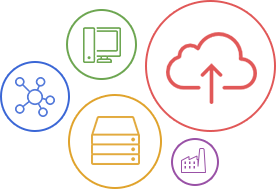As global concerns around environmental sustainability continue to rise, organizations across all sectors are being called upon to reduce their ecological footprints. Information technology (IT), with its energy-hungry data centers and electronic waste, is no exception. Adopting eco-friendly IT practices not only helps protect the environment but also can result in significant cost savings. This article explores strategies for minimizing the environmental impact of your IT infrastructure.
Also Read: Preparing for the Future: IT Infrastructure Planning for Business Growth
The Environmental Impact of IT
The IT sector contributes significantly to global carbon emissions. Data centers, filled with servers running 24/7, consume large amounts of electricity. According to a study by the Natural Resources Defense Council, data centers in the U.S. alone consume up to 91 billion kilowatt-hours of electricity, a number expected to increase by about 53% by 2020.
Electronic waste, or e-waste, is another environmental challenge. E-waste refers to discarded electronic equipment, which often ends up in landfills, releasing harmful chemicals into the environment.
Improving Energy Efficiency
Improving energy efficiency is a key strategy for reducing the environmental impact of IT infrastructure. There are several approaches to this:
Virtualization and Server Consolidation
Virtualization technology allows a single physical server to run multiple virtual servers, each with its own operating system and applications. This enables organizations to drastically reduce the number of physical servers they require, leading to significant reductions in energy consumption.
Also Read: How Virtual Servers Can be Better Than the Real Thing
Power Management
"Many devices consume power even when they are idle. Implementing power management practices, such as enabling power-saving modes on hardware and shutting down unused systems, can help reduce unnecessary power consumption."- Emil Isanov
Efficient Cooling
Cooling systems can account for a significant portion of a data center's energy use. Adopting energy-efficient cooling methods, such as using outside air or liquid cooling, can significantly reduce energy consumption.
Recycling Electronic Waste
Electronic devices contain valuable metals that can be recovered and reused. Recycling or properly disposing of electronic waste not only helps conserve these resources but also prevents harmful materials from entering the environment. .jpg?width=400&height=295&name=recycled-8111001_640%20(1).jpg)
Many electronics manufacturers and retailers offer take-back programs, and there are numerous certified e-waste recycling facilities worldwide. It's also important to consider the lifecycle of IT equipment during the purchasing process and opt for devices that are durable, repairable, and recyclable.
The Benefits of Green IT
While the primary motive for adopting green IT practices is environmental responsibility, these efforts can also yield significant benefits for organizations:
Cost Savings
Energy-efficient hardware, server virtualization, and efficient power and cooling strategies can lead to substantial savings on energy bills.
Corporate Social Responsibility
Taking action to reduce the environmental impact of your IT operations can enhance your organization's reputation and contribute to its Corporate Social Responsibility (CSR) objectives.
Regulatory Compliance
In some regions, companies are required by law to properly dispose of e-waste and reduce their energy consumption. Adopting green IT practices can help ensure compliance with these regulations.
Conclusion
Going green is more than a trend - it's a necessary step towards ensuring a sustainable future. By embracing green IT practices, companies can contribute to environmental protection efforts, meet CSR goals, comply with regulations, and even save money. From virtualization to efficient power management and e-waste recycling, there are many strategies companies can employ to reduce the environmental impact of their IT infrastructure.
.png)
Facebook: facebook.com/etech7
Twitter: twitter.com/etech7
Instagram: instagram.com/etech_7/
Blog: blog.etech7.com/














